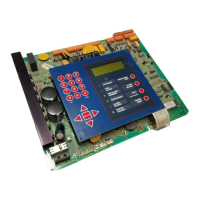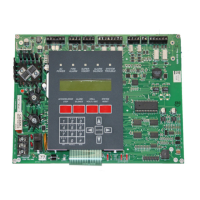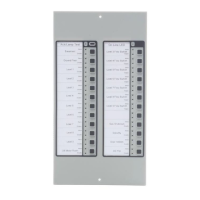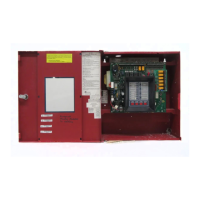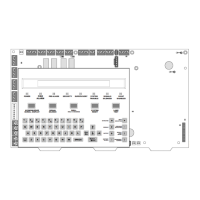3-26
Programming 15088:J 10/22/99
The following programming example illustrates enabling these functions.
PRESS@1=INST,2=STY,3=TDLY,4=AVPS,5=ZBND,6=EXTEQ,7=LOCP,8=ISIB,9=PARM :@9
DO@YOU@WANT@TO@CHANGE@THE@HIGH@DAY/NIGHT@SENSITIVITY@ZONE?@(Y=YES,N=NO) :@Y
DO@YOU@WANT@A@HIGH@DAY/NIGHT@SENSITIVITY@ZONE?@(Y=YES,N=NO) :@Y
ENTER@HIGH@DAY/NIGHT@SENSITIVITY@ZONE@(ZXXX) @@@@@@@@@@@@@@@@@@@@@:@Z150
DO@YOU@WANT@TO@CHANGE@THE@LOW@DAY/NIGHT@SENSITIVITY@ZONE?@(Y=YES,N=NO) :@Y
DO@YOU@WANT@A@LOW@DAY/NIGHT@SENSITIVITY@ZONE?@(Y=YES,N=NO) :@Y
ENTER@LOW@DAY/NIGHT@SENSITIVITY@ZONE@(ZXXX) :@Z1
DO@YOU@WANT@TO@CHANGE@THE@ DETECTOR@ VER.@TROUBLE @COUNTER?@(Y=YES,N=NO) :@Y
DO@YOU@WANT@THE@ DETECTOR@ VERIFICATION @TROUBLE @ENABLED?@(Y=YES,N=NO) :@Y
ENTER@DETECTOR@ VERIFICATION @TROUBLE@ COUNT@(1@-@20 :@15
DO@YOU@WANT@TO@CHANGE@"SACM"/"SEQM"@MODULE@STATE@REPORTING?@(Y=YES,N=NO) :@Y
DO@YOU@WANT@TO@REPORT@"SACM"/"SEQM"@MODULE@STATE@CHANGES?@(Y=YES,N=NO) :@Y
DO@YOU@WANT@TO@CHANGE@THE@DRIFT@COMPENSATION@OPERATION?@(Y=YES,N=NO) :@Y
DO@YOU@WANT@DRIFT@COMPENSATION@ENABLED?@(Y=YES,N=NO) :@Y
DO@YOU@WANT@TO@CHANGE@THE@PAGER@PROGRAMMING?@(Y=YES,N=NO) :@Y
DO@YOU@WANT@THE@PAGER@ENABLED?@(Y=YES,N=NO) :@Y
DO@YOU@WANT@TO@CHANGE@THE@MODEM@PROGRAMMING?@(Y=YES,N=NO) :@Y
DO@YOU@WANT@THE@MODEM@ENABLED?@(Y=YES,N=NO) :@Y
DO@YOU@WANT@TO@CHANGE@THE@NAM@PROGRAMMING?@(Y=YES,N=NO) :@Y
DO@YOU@WANT@THE@NAM@ENABLED?@(Y=YES,N=NO) :@N
DO@YOU@WANT@TO@CHANGE@THE@RAPID@POLLING@PROGRAMMING?@(Y=YES,N=NO) :@Y
DO@YOU@WANT@RAPID@POLLING@ENABLED?@(Y=YES,N=NO) :@Y
DO @YOU @WANT @TO@ CHANGE@ THE @SUPERVISORY@ MODULE@ ACS @REPORTING?@ (Y=YES,N=NO) :@Y
DO@ YOU@ WANT@ SUPERVISORY@ MODULES @TO@ ILLUMINATE@ ACTIVE @LED?@ (Y=YES,N=NO) :@Y
Day/Night Sensitivity
The function of Day/Night sensitivity is to force intelligent detectors into high or low sensitivity when the
appropriate zones are active, regardless of the detectors normal sensitivity setting. If both the high and low
zones are active, the system is forced to high sensitivity. The Day/Night high and low sensitivity zones may
be individually activated by control-by-event (CBE) equations written for this purpose or through the use of
control-by-time equations.
The capability of the control panel to provide the function of day/night sensitivity can be enabled/disabled in
both Full and Partial System Programming. However, the day/night sensitivity option (for addressable
detectors) must be enabled/disabled individually for each SLC Loop device.
The following must be performed when programming Day/Night Detector Sensitivity:
• Enable the Day/Night Sensitivity and set the zone number. This is a global setting.
• Select Day/Night Sensitivity for each individual detector. For example:
Detector 1 = YES
Detector 2 = NO
Detector 3 = YES
Detector 4 = YES
Detector Verification Trouble
If set, the control panel will generate a trouble for each intelligent detector which exceeds the verification
counter trouble limit. This feature can be used to isolate those devices which excessively go into detector
verification before causing false alarm conditions in the panel. To clear this condtion reset the detector verification
counters as described in Section 2.6.
SACM/SEQM Module Reporting
If selected for reporting, module state changes for modules with the Software Type ID SACM or SEQM will be
printed out. See
Software Type IDs
for further information on all Software Type IDs.
Drift Compensation
If set, the addressable detectors will automatically compensate for environmental contaminants and other
factors over time, until the drift tolerance value has been exceeded. When the drift tolerance value has been
exceeded, the control panel will signal a maintenance alert for the apropriate detector.
www.PDF-Zoo.com
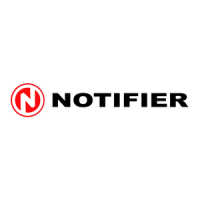
